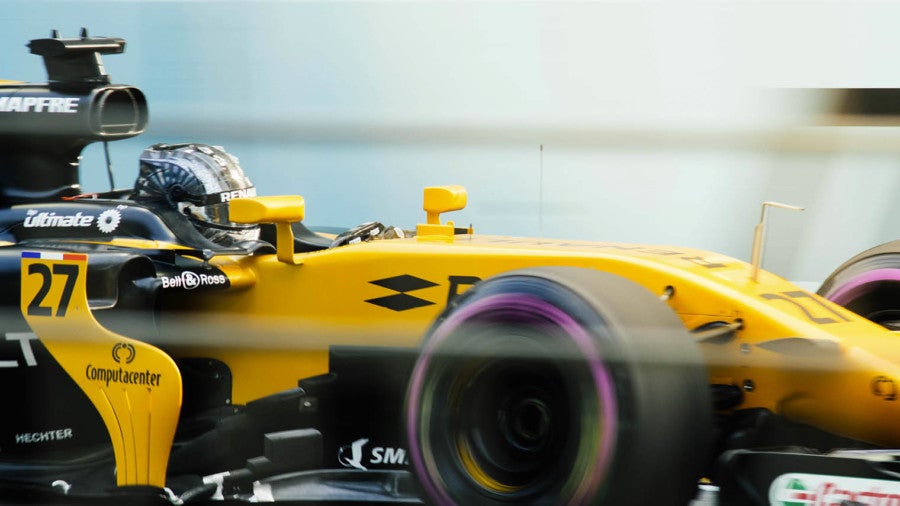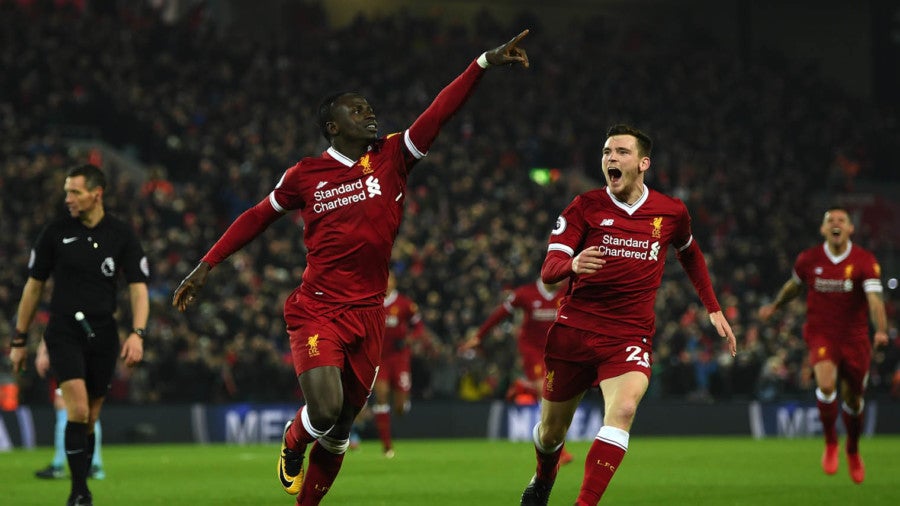01 POWERING ELITE ATHLETES
At the top level of sport, it’s all about fractional improvements and increasingly technology is helping elite men and women power to glory. Cloud technology, which enables colossal amounts of data to be crunched, analysed and presented in a trice, is the latest game-changer for sports stars.
Members of the Brazil’s national football team, currently second-favourites to win the World Cup in Russia this summer, behind holders Germany, use a cloud-based personalised hydration platform, Gatorade Gx. An individualised squeeze bottle containing a microchip tracks how much and how fast each footballer is drinking, and this information is passed, in real time, to coaches. LED light rings in the cap enable athletes to monitor and regulate their ideal fluid intake.
Tucker Fort, a partner at Smart Design, the company that worked with Gatorade to produce the Gx, which is also used by top basketball and football clubs in America, and is launching in the UK this year, says: “In the four years since Gx was first piloted, we have seen an explosion of software and the internet of things infiltrating every aspect of sports science and performance. Cloud-based solutions are no longer experimental, they are absolutely required to be competitive.”
For endurance athletes, including long-distance runners and cyclists, there are in-ear wearable devices that monitor both heart rate and core body temperature, along with other metrics such as VO2 (oxygen volume), distance and cadence. When combined with cloud-based analytics, this equips coaches and sports stars with the tools to improve. It helps athletes acclimatise in new environments and reduces recovery time as well as risk of over-training.
Athlete management systems (AMS) are becoming popular across a number of sports, including rowing, rugby union and football. Through an application on a chosen device, players can access their cloud-based AMS, which details performance data and assists with wellbeing.
They can review a match and mug up on competitors, too, in a few finger swipes. Glenn Skingsley, performance coach of Lincoln City, which last season became the first non-league football club to reach the FA Cup quarter-final stage since 1914, says the technology has been critical to the team’s success.
Using cloud-based video-analysis software to scout opponents is especially useful when on a cup run. And the manager can see which players have done their homework and tuned in to their personalised playlist. Mr Skingsley adds: “We can break down a video, highlighting things we think we did well or need to work on. There is even a chat function so we can tell all the players when the clips are up or discuss things with them over the phone.”
02 ENABLING LOWER-TIER SPORTS

Cloud technology may be helping elite athletes achieve marginal gains, but it’s making an even bigger impact further down the ladder. That’s because minority sports and lower-tier leagues now have the ability to become broadcasters in their own right, and reach a global audience.
Traditionally, it would require a sizeable broadcasting operation to produce and distribute sports events to supporters via television. However, in 2018 the combination of cloud technology and “over-the-top” (OTT) broadcasting – audio, video and other media content delivered over the internet, without involving a multiple-system operator – has meant sports organisations of all sizes have a direct line to audiences.
Thanks to the cloud, a new OTT channel can be launched in just days and target audiences around the world with the same interest be it combat sports or speed knitting. In essence, the cloud has democratised sports broadcasting and production, and allows smaller sports to compete with big-budget operations, such as the UEFA Champions League in football or the Indian Premier League in cricket.
Mehul Kapadia, vice president of global marketing at Tata Communications, which connects each Formula 1 grand prix circuit to its global network and works with more than 20 broadcasters to bring the motor racing to fans worldwide, says: “The cloud is levelling the playing field between sports giants like F1 and smaller local series like the F4 British Championship. You only need a few cameras to capture the action; the rest of the production can be done easily and inexpensively in the cloud.
“This opens up a global market for local sports leagues and is great news for those of us with an insatiable appetite for different kinds of sports which aren’t shown regularly on TV. Also, because producing and distributing content in the cloud is simpler and less expensive, it lowers the barriers for smaller sports organisations to experiment with innovative technologies like live 360-degree video.”
Given that 36 per cent of sports fans watch and follow the action via social media channels, according to a recent GlobalWebIndex report, and for younger generations this is the norm, the trend is only going to increase and further redress the balance. The cloud helps platforms, large and small, keep up with consumer demand in a splintering broadcasting landscape.
Katie Young, senior trends analyst at GlobalWebIndex, says: “Sports brands and broadcasters need to recognise that their audience now spans a multitude of devices and platforms. It’s in the industry’s own interests to take the initiative in establishing ways to fully engage this audience or they will soon find themselves chasing the fans, rather than leading them.”
03 REACHING FANS WORLDWIDE

Merchandise sales at Liverpool have benefited from a seamless online shopping experience
Pep Guardiola’s Manchester City are runaway leaders in the Premier League and not only has cloud technology helped the players up their game, it has boosted fan engagement and also made back-office operations more efficient.
Since 2015 SAP has been providing the club with cloud solutions, and last season the club unveiled the division’s first fan-friendly, interactive digital installation featuring touchscreen interface and video display. Located in City Square, the social hub of the club’s Etihad Stadium, the CityPulse Wall enhances the match-day experience for supporters by allowing fans to access data-driven insights, real-time statistics and profiles for every player.
Other clubs are catching up with Manchester City, off the pitch at least. For example, by migrating the hosting environment of its e-commerce site to a cloud platform, Liverpool’s merchandise sales have improved dramatically. Kit launches can generate around 20,000 unique users on the store all at once. That surge may have been a problem in the past, but now the site will auto-scale depending on the number of visitors. Since the move to cloud with service provider Claranet, Liverpool has enjoyed approximately 99.9 per cent “uptime”, which means its customers can have a seamless shopping experience.
Elsewhere, German club FC Schalke 04 are seeing big benefits from pioneering cloud technology. Alexander Jobst, head of marketing, says: “It has allowed us to distribute messages to fans’ mobile phones more quickly, using push notifications and location-based services. It has helped not only boost our membership numbers, but has opened up many new opportunities. Digitising how the club engages with its fans has enabled us to get in front of new audiences, while staying true to the club’s identity.”
Likewise, Champions League holders Real Madrid use cloud technology to “tailor experiences for supporters”, says Rafael de los Santos, the club’s global digital director. “With over 600 million supporters worldwide, almost a half of them connected through our digital channels and only 3 per cent of these fans living in Spain, bringing our global fanbase closer to the club wasn’t going to be easy. But by embracing new technologies we’ve been able to push the boundaries of fan integration like never before.
“The Real Madrid digital platform, which uses Microsoft cloud technology, has given us the scalability to engage with our fans on a one-to-one level and the insights to provide them with the content they’re looking for. The platform has transformed our business model, boosting digital revenues by 30 per cent and increased fan profiles by 400 per cent since our partnership began. It’s helped us rebuild and reinterpret our business, most importantly by putting Real Madrid fans across the globe at the centre.”
01 POWERING ELITE ATHLETES
02 ENABLING LOWER-TIER SPORTS






